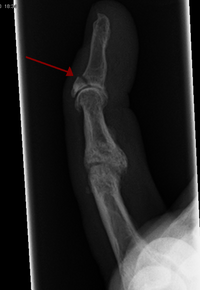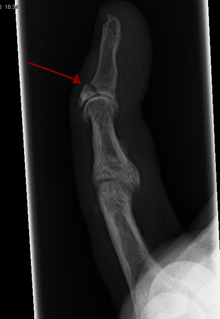Medical condition
Parkinson's disease Other names Parkinson disease, idiopathic or primary parkinsonism, hypokinetic rigid syndrome, paralysis agitans, shaking palsy Illustration of Parkinson's disease by William Richard Gowers , first published in A Manual of Diseases of the Nervous System (1886), and based on 1879 photographs attributed to Albert Londe [ 4] [ 5] Specialty Neurology Symptoms Tremor , rigidity , slowness of movement , difficulty walking [ 6] Complications Dementia , depression , anxiety,[ 7] [ 8] Usual onset Age over 60[ 6] [ 9] Causes Unknown[ 10] Risk factors Pesticide exposure, head injuries [ 10] Diagnostic method Based on symptoms[ 6] Differential diagnosis Dementia with Lewy bodies , progressive supranuclear palsy , essential tremor , antipsychotic use[ 11] Treatment Medications, surgery[ 6] Medication L-DOPA , dopamine agonists [ 7] Prognosis Life expectancy about 7–15 years[ 12] Frequency 6.2 million (2015)[ 13] Deaths 117,400 (2015)[ 14] Named after James Parkinson
Medical condition
Parkinson's disease Other names Parkinson disease, idiopathic or primary parkinsonism, hypokinetic rigid syndrome, paralysis agitans, shaking palsy Illustration of Parkinson's disease by William Richard Gowers , first published in A Manual of Diseases of the Nervous System (1886), and based on 1879 photographs attributed to Albert Londe [ 4] [ 5] Specialty Neurology Symptoms Tremor , rigidity , slowness of movement , difficulty walking [ 6] Complications Dementia , depression , anxiety,[ 7] [ 8] Usual onset Age over 60[ 6] [ 9] Causes Unknown[ 10] Risk factors Pesticide exposure, head injuries [ 10] Diagnostic method Based on symptoms[ 6] Differential diagnosis Dementia with Lewy bodies , progressive supranuclear palsy , essential tremor , antipsychotic use[ 11] Treatment Medications, surgery[ 6] Medication L-DOPA , dopamine agonists [ 7] Prognosis Life expectancy about 7–15 years[ 12] Frequency 6.2 million (2015)[ 13] Deaths 117,400 (2015)[ 14] Named after James Parkinson





